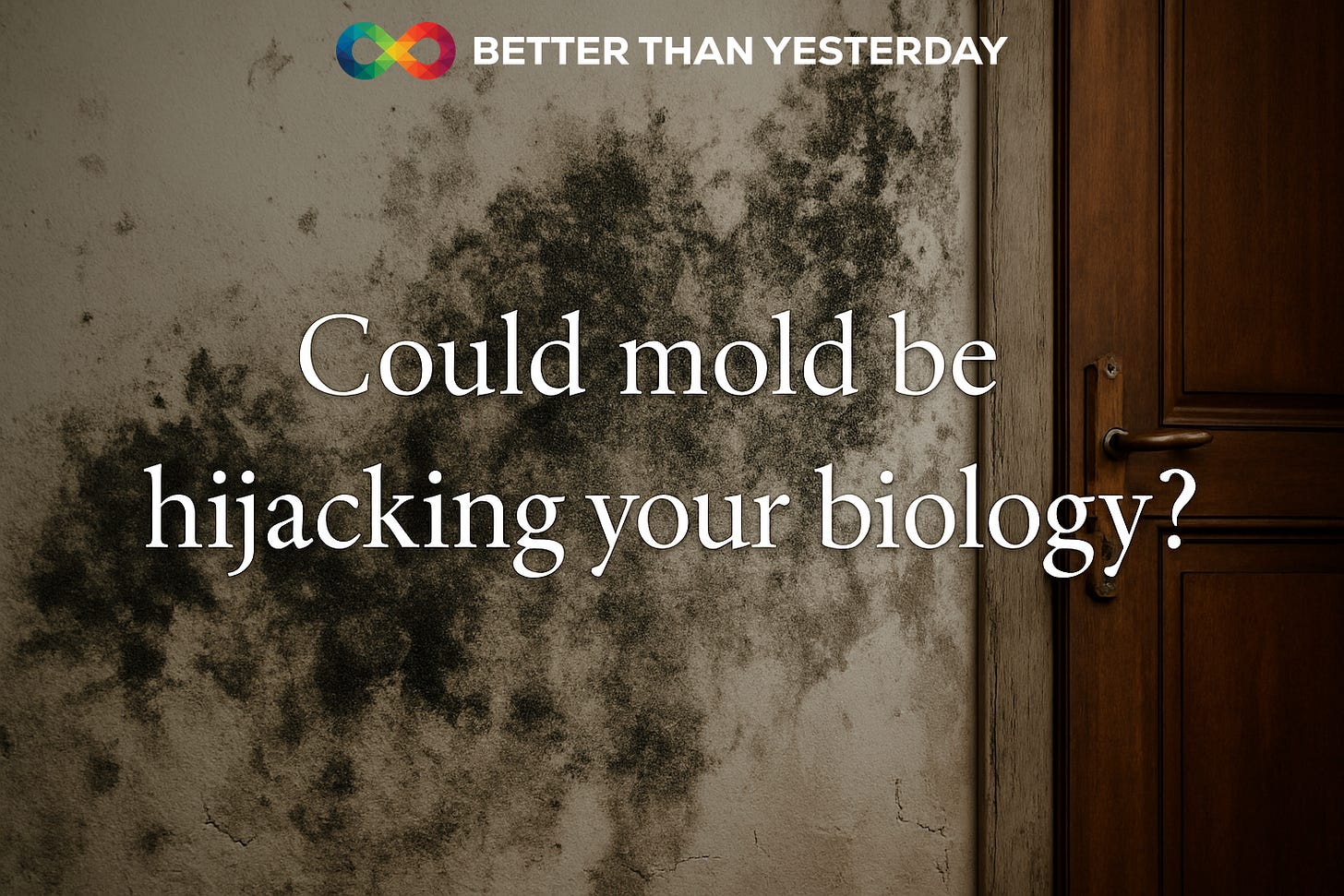Is Mold Hijacking Your Biology?
Could invisible mold toxins be the hidden reason behind fatigue, brain fog, or stubborn inflammation?

What are mold toxins and why do they matter?
Mold toxins (aka mycotoxins) are invisible, fat-soluble chemicals produced by certain types of mold. They can hide in your fat tissue, brain, and organs, making them hard to detect, and harder to eliminate.
Most people associate mold with visible spots on walls or spoiled food. But these toxins can be airborne, settle in dust, and contaminate everything from buildings to bedding, and even food and drink.
Not everyone reacts the same. But for those who do, symptoms can be life-altering.
How mold toxins may affect your health
Studies suggest that over 40% of the population has genetic traits (like HLA-DR variations) that reduce their ability to detox mold efficiently. For them, even low-level exposure might trigger:
🧠 Brain fog
😴 Fatigue
💢 Mood swings
💨 Breathing issues
🥴 Digestive trouble or bloating
🦴 Joint pain or inflammation
Why? Because mold toxins can:
Disrupt mitochondria, the powerhouses of your cells
Block ATP, your energy currency
Interfere with thyroid and sex hormones
Mimic or exacerbate conditions like Lyme, CFS, fibromyalgia, Hashimoto’s, and even neurodevelopmental issues like autism in vulnerable populations.
Where does it come from?
Mold exposure isn’t always dramatic. It can come from:
🏠 Damp areas: bathrooms, basements, leaky roofs
🛋️ Dust: especially under furniture or in HVAC vents
🧃 Food: aged cheese, grains, wine, dried fruit, nuts
☕ Coffee: especially if stored poorly or not mold-tested
Yes, even coffee. While mainstream science considers the levels “safe,” certain people report huge health changes when switching to mold-tested brands.
Signs mold may be affecting you
🧪 Test your body: Urine tests can detect mycotoxins like ochratoxin A, aflatoxins, or zearalenone.
🏠 Test your home: Dust tests (like ERMI or HERTSMI) can measure mold DNA on surfaces.
Red flags might include:
Waking up groggy despite sleeping
Weird reactions to alcohol, perfume, or caffeine
Chronic sinus issues
Sensitivity to light, noise, or chemicals
Frequent urination or headaches after coffee
What you can do about it
If you suspect mold is an issue, here’s what many practitioners recommend:
🧼 Clean your space: HEPA filters, frequent dusting, and fixing leaks.
🧴 Support detox: Binders like charcoal, bentonite clay, or glutathione (with practitioner guidance).
🔥 Sweat it out: Sauna, infrared therapy, or gentle exercise.
🌿 Nasal rinses: Especially if you’ve been in a moldy space.
🍽️ Low-mold diet: Avoid mold-prone foods (aged, dried, fermented) temporarily.
🧯 Avoid bleach: It doesn't kill mold at the root and can make spores airborne.
🧺 Toss porous items: Think damp cardboard, rugs, moldy clothes, or foam.
So… should you worry?
That depends.
Most people will never feel a thing. Others may only react after years of slow exposure. And some, often with the HLA genetic mutation or preexisting inflammation may spiral into severe symptoms from relatively minor contact.
Some researchers say the risk is overblown. Others argue mold illness is underdiagnosed and misattributed to anxiety, burnout, or vague autoimmune flares.
There’s still a lot we don’t know. But if your energy, brain, or mood feel “off” and nothing else is helping mold might be worth exploring.


